
MACHINE TRANSLATION
Scope & Guideline
Transforming language through technology.
Introduction
Aims and Scopes
- Low-resource languages:
A significant emphasis is placed on developing machine translation solutions for low-resource languages, addressing the challenges and limitations in data availability. - Neural machine translation (NMT) methodologies:
The journal frequently publishes research on various neural network architectures and their applicability to machine translation, exploring enhancements in model performance and efficiency. - Cross-lingual and bilingual embeddings:
Research often investigates the use of bilingual word embeddings and alignment techniques to improve translation accuracy and facilitate better language understanding. - Integration of linguistic features:
There is a consistent focus on incorporating syntactic and semantic information into machine translation systems to enhance translation quality. - Sign language translation:
The journal also explores the niche area of sign language translation, investigating methods for automating the translation process and improving user experience.
Trending and Emerging
- Unsupervised learning techniques:
There is an increasing focus on unsupervised and semi-supervised approaches to machine translation, particularly for low-resource languages, showcasing the need for innovative solutions in data-scarce environments. - Multimodal translation approaches:
Research is trending towards integrating visual and linguistic data for translation tasks, particularly in sign language and video translation, reflecting a broader understanding of communication. - Attention mechanisms and advanced architectures:
Recent studies have highlighted novel attention mechanisms and encoder-decoder architectures that improve the efficiency and effectiveness of neural machine translation. - User experience and translation modality:
The exploration of user experience in relation to machine translation output is gaining traction, indicating a need to understand how translation affects users in real-world applications. - Transfer learning and domain adaptation:
Emerging themes include the application of transfer learning techniques to enhance translation performance across different languages and domains, particularly for low-resource scenarios.
Declining or Waning
- Rule-based machine translation:
There is a noticeable reduction in research related to traditional rule-based approaches as the field increasingly shifts towards data-driven neural methods. - General machine translation concepts:
Research that does not focus on specific challenges, such as low-resource languages or neural methodologies, appears to be less frequent, indicating a trend towards specialized studies. - Post-editing techniques:
Although post-editing remains relevant, there has been a decline in publications specifically addressing automatic post-editing, possibly due to the rise of more advanced NMT systems.
Similar Journals
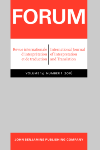
Forum-Revue Internationale d Interpretation et de Traduction-International Journal of Interpretation and Translation
Bridging Languages, Cultures, and Disciplines.Forum-Revue Internationale d’Interprétation et de Traduction - International Journal of Interpretation and Translation is a prestigious peer-reviewed journal published by John Benjamins Publishing Co, renowned for its contributions to the fields of linguistics and literary theory. With an ISSN of 1598-7647 and an E-ISSN of 2451-909X, this journal provides a vital platform for researchers, professionals, and students to disseminate and engage with innovative research findings and theoretical developments in interpretation and translation studies. As of 2023, it holds a respectable Q3 ranking in Linguistics and Language and a Q2 in Literature and Literary Theory, underscoring its growing influence within academia, reflected by its Scopus rankings. The journal encompasses a diverse array of perspectives and methodologies to enhance the understanding of translation practices and their implications in contemporary society. Although the journal operates within a limited open access framework, its commitment to high-quality scholarship makes it an essential resource for those seeking to contribute to and stay abreast of advancements in this dynamic field. Established to foster interdisciplinary dialogue, the journal invites submission from a wide range of scholarly approaches and encourages collaborative discourse among linguists, translators, and literary theorists.
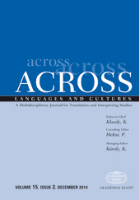
Across Languages and Cultures
Cultivating Multidisciplinary Perspectives in LinguisticsAcross Languages and Cultures is a leading journal in the field of Linguistics and Language, published by AKADEMIAI KIADO ZRT in Hungary. With its ISSN 1585-1923 and E-ISSN 1588-2519, the journal has established itself as a prominent platform for advancing research and discussion in the dynamics of language across diverse cultural contexts. Its impressive Q1 category ranking indicates its significant influence, with a Scopus rank of #227 in Language and Linguistics, showcasing its robust academic impact (79th percentile). This journal, converging from 2007 to 2024, aims to foster interdisciplinary dialogue and promote innovative research methodologies in multilingual studies. Though not an open-access journal, Across Languages and Cultures provides invaluable insights for researchers, professionals, and students eager to explore the intricacies of language use and its sociocultural implications. Located at Budafoki Ut 187-189-A-3, H-1117 Budapest, Hungary, it continues to serve as an essential resource for those passionate about the linguistic sciences.

Language Resources and Evaluation
Connecting academia with practical language insights.Language Resources and Evaluation, published by SPRINGER, is a leading peer-reviewed journal that focuses on the interdisciplinary field of language resources, evaluation, and their applications across various domains. With an impressive impact factor reflecting its academic rigor and influence in the fields of Education, Library and Information Sciences, Linguistics, and Language, this journal is categorized Q1 (2023) within these disciplines, underscoring its significance and high-quality contributions. Operating from the Netherlands, the journal has consistently delivered valuable insights since its inception in 1996, with ongoing publications continuing through 2024. Researchers and professionals are provided with open access options, fostering a global exchange of knowledge crucial for advancing the study and application of language technologies and resources. As it continues to rank exceptionally in Scopus, this journal serves as an essential platform for academics, offering a comprehensive understanding of the challenges and innovations in evaluating language resources.
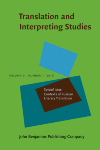
Translation and Interpreting Studies
Advancing Knowledge in Translation and Interpreting Studies.Translation and Interpreting Studies is a prestigious academic journal published by John Benjamins Publishing Co, focused on the dynamic fields of translation and interpreting. Established in 2011, this journal has rapidly ascended to become a leading platform in its domain, achieving Q1 quartile status in Linguistics, Language, and Literature categories as of 2023. With an impressive ranking of #16 out of 1106 in Arts and Humanities for Literature and Literary Theory, and #182 out of 1088 in Language and Linguistics, it is recognized for its significant contributions to scholarly discourse. Although not fully open-access, the journal provides essential insights and research findings for linguists, translators, interpreters, and students, fostering a greater understanding of the theoretical and practical implications of translation studies. Situated in the Netherlands, it plays a vital role in the global academic community, bridging gaps between theory and practice, and ensuring that cutting-edge research is readily accessible to professionals and scholars alike.
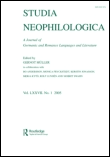
STUDIA NEOPHILOLOGICA
Where Language Meets Philosophy: A Scholarly VoyageSTUDIA NEOPHILOLOGICA, published by Routledge Journals, Taylor & Francis Ltd, is a distinguished periodic publication that has been contributing to the fields of Linguistics and Philosophy since its inception in 1928. With an ISSN of 0039-3274 and E-ISSN 1651-2308, this journal is recognized within the academic community as an essential platform for innovative research and scholarship. It currently holds a Q3 quartile ranking in both Linguistics and Philosophy categories for 2023, further illustrating its relevance in a competitive landscape, where it ranks #465 out of 1088 in Scopus Ranks for Language and Linguistics. Although not openly accessible, the journal provides vital insights and analyses that push the boundaries of understanding language and its philosophical implications. With a coverage spanning from 1928 to 2024, STUDIA NEOPHILOLOGICA is indispensable for researchers, professionals, and students eager to expand their knowledge and engage with critical discussions in these disciplines.

Estudios de Traduccion
Connecting scholars to revolutionize translation practices.Estudios de Traduccion is a distinguished academic journal published by UNIV COMPLUTENSE MADRID, SERVICIO PUBLICACIONES, dedicated to advancing the field of translation studies. Since its establishment, the journal has embraced an Open Access model, providing researchers, professionals, and students with free and unrestricted access to high-quality scholarly articles since 2011. With the ISSN 2174-047X and E-ISSN 2254-1756, it serves as a vital resource for those interested in innovative methodologies, theoretical advancements, and practical applications within translation. By championing interdisciplinary research and fostering dialogue among scholars from diverse backgrounds, Estudios de Traduccion plays a crucial role in shaping the understanding of translation as a dynamic and evolving discipline. As a reputable platform, it invites contributions that stimulate critical thought and inspire future research in this essential area of communication.
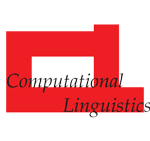
COMPUTATIONAL LINGUISTICS
Advancing Language Understanding through AICOMPUTATIONAL LINGUISTICS is a premier academic journal published by MIT Press, focusing on the intersection of linguistics and artificial intelligence. With the ISSN 0891-2017 and the E-ISSN 1530-9312, the journal serves as a key resource for researchers and practitioners in computational linguistics, a field that plays a crucial role in advancing language processing technologies. Since adopting an Open Access model in 2017, the journal has broadened its accessibility, encouraging a global exchange of ideas and research findings. It consistently ranks within the top quartiles of its respective fields, achieving Q1 status in Artificial Intelligence, Computer Science Applications, and Linguistics and Language as of 2023. This notable standing is further reflected in its Scopus rankings, placing it in the 99th percentile for Language and Linguistics, and maintaining a prestigious position in various computer science categories. The journal publishes cutting-edge research, theoretical frameworks, and practical applications, and aims to foster interdisciplinary collaboration among linguists, computer scientists, and AI specialists. As the field evolves, COMPUTATIONAL LINGUISTICS remains an essential platform for disseminating transformative ideas and pioneering work that shapes the future of language and technology.

Quaderns de Filologia-Estudis Linguistics
Connecting Scholars in the Pursuit of Linguistic Excellence.Quaderns de Filologia-Estudis Linguistics is a distinguished open-access journal published by the Universitat de València, Facultat de Filologia, specializing in the study of linguistics and language. With its ISSN 1135-416X and E-ISSN 2444-1449, this journal has been a valuable resource for scholars in the field since its transition to open access in 2012. Located in Valencia, Spain, it contributes significantly to the discourse within the Linguistics and Language category, currently holding a Q3 quartile ranking as per Scopus. The journal is dedicated to the dissemination of innovative research findings and theoretical discussions, ensuring that both emerging and established scholars have a platform for their work. Its inclusive scope and commitment to quality research help navigate the complex landscape of linguistic studies, making it an essential resource for researchers, professionals, and students alike. With converged years covering from 2019 to 2023, Quaderns de Filologia continues to foster a vibrant academic community, encouraging submissions that advance the field of linguistics.

Trans-Revista de Traductologia
Unveiling the Art and Science of TranslationTrans-Revista de Traductologia, an esteemed journal in the realm of Translation Studies and Linguistics, is published by the University of Malaga's Faculty of Philosophy and Letters. With an Open Access model since 2015, it facilitates the global dissemination of research and findings, supporting the academic community and enhancing visibility for scholars. The journal spans research from 2012 to 2023 and has achieved a commendable Q2 ranking in the Linguistics and Language category for 2023, signifying its growing influence within the field. Its Scopus rankings reflect its competitive edge, positioned at #484 in Arts and Humanities as well as #565 in Social Sciences, as it continues to foster a platform for innovative and interdisciplinary investigation in language dynamics, translation practices, and cultural exchanges. Scholars, professionals, and students alike will find a rich resource within its pages to explore both theoretical frameworks and practical applications in translation.

Interpreter and Translator Trainer
Transforming Education for Language ProfessionalsInterpreter and Translator Trainer, published by Routledge Journals, Taylor & Francis Ltd, is an esteemed academic journal dedicated to the fields of education, linguistics, and translation studies. With an ISSN of 1750-399X and E-ISSN 1757-0417, this journal has established itself as a leading platform for scholarly discourse and innovative research since its inception in 2007. Housed in the United Kingdom, it is recognized for its high academic standards, evidenced by its Q1 rankings in both Education and Linguistics for 2023. The journal explores significant developments in interpreter and translator training, providing a vital resource for researchers, educators, and practitioners striving to enhance their pedagogical frameworks and methodologies. With its impressive Scopus rankings reflecting a strong impact in the arts, humanities, and social sciences, Interpreter and Translator Trainer serves as an essential publication for those committed to advancing the understanding and practice of translation and interpreter education. The journal remains accessible via traditional subscription models, inviting contributions that push the boundaries of research and teaching in these interconnected fields.